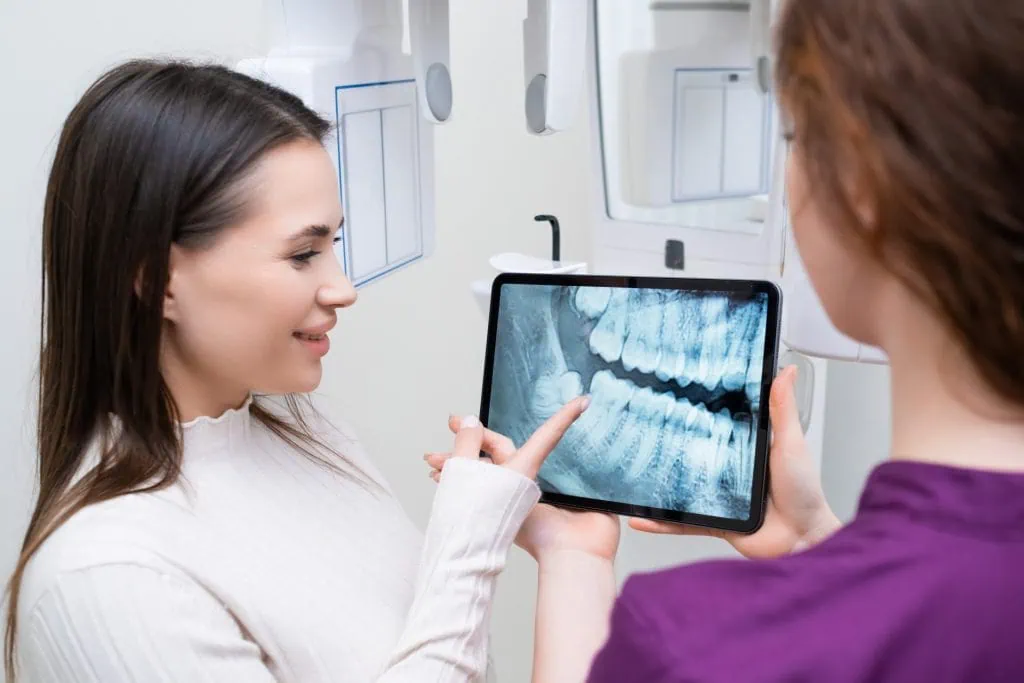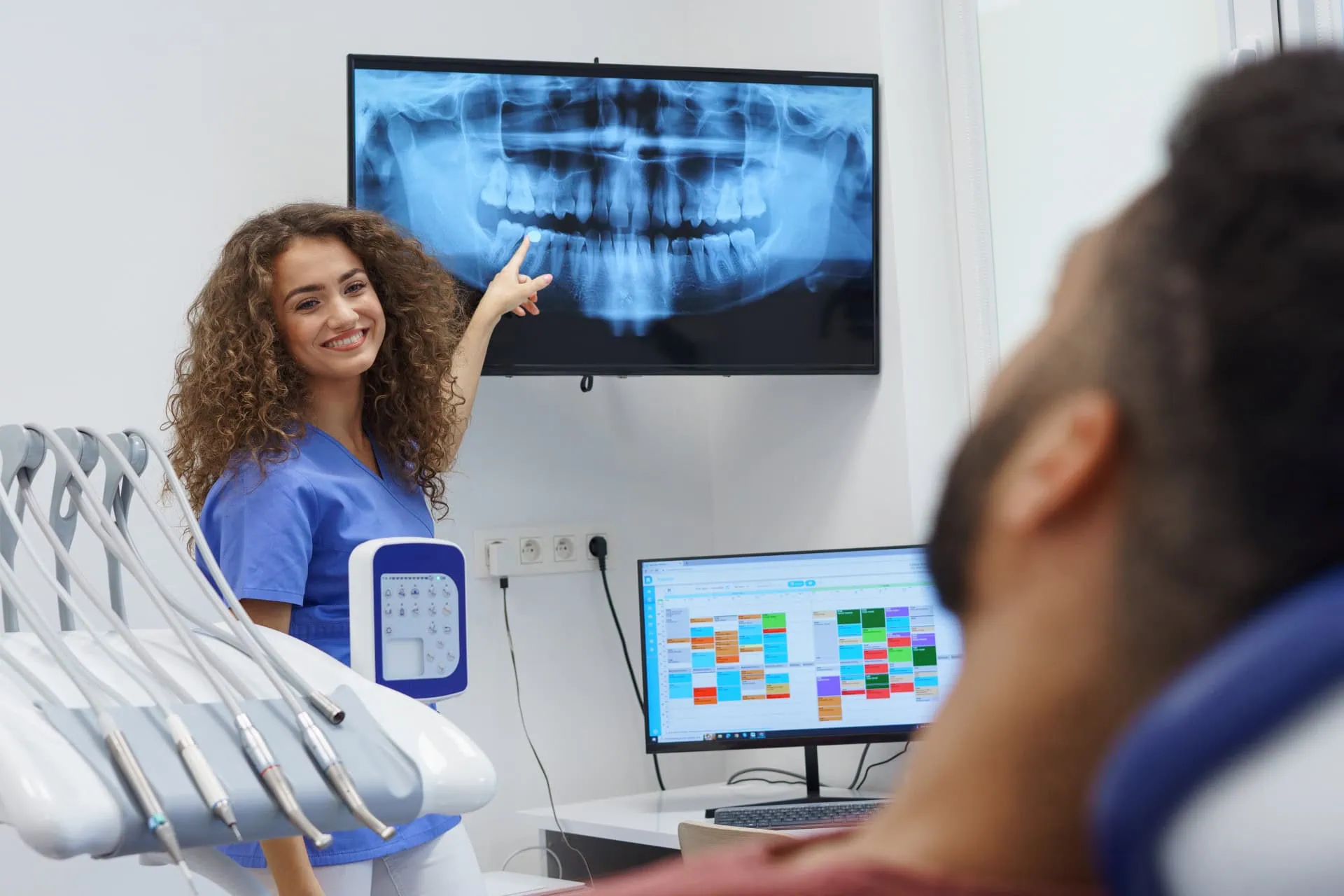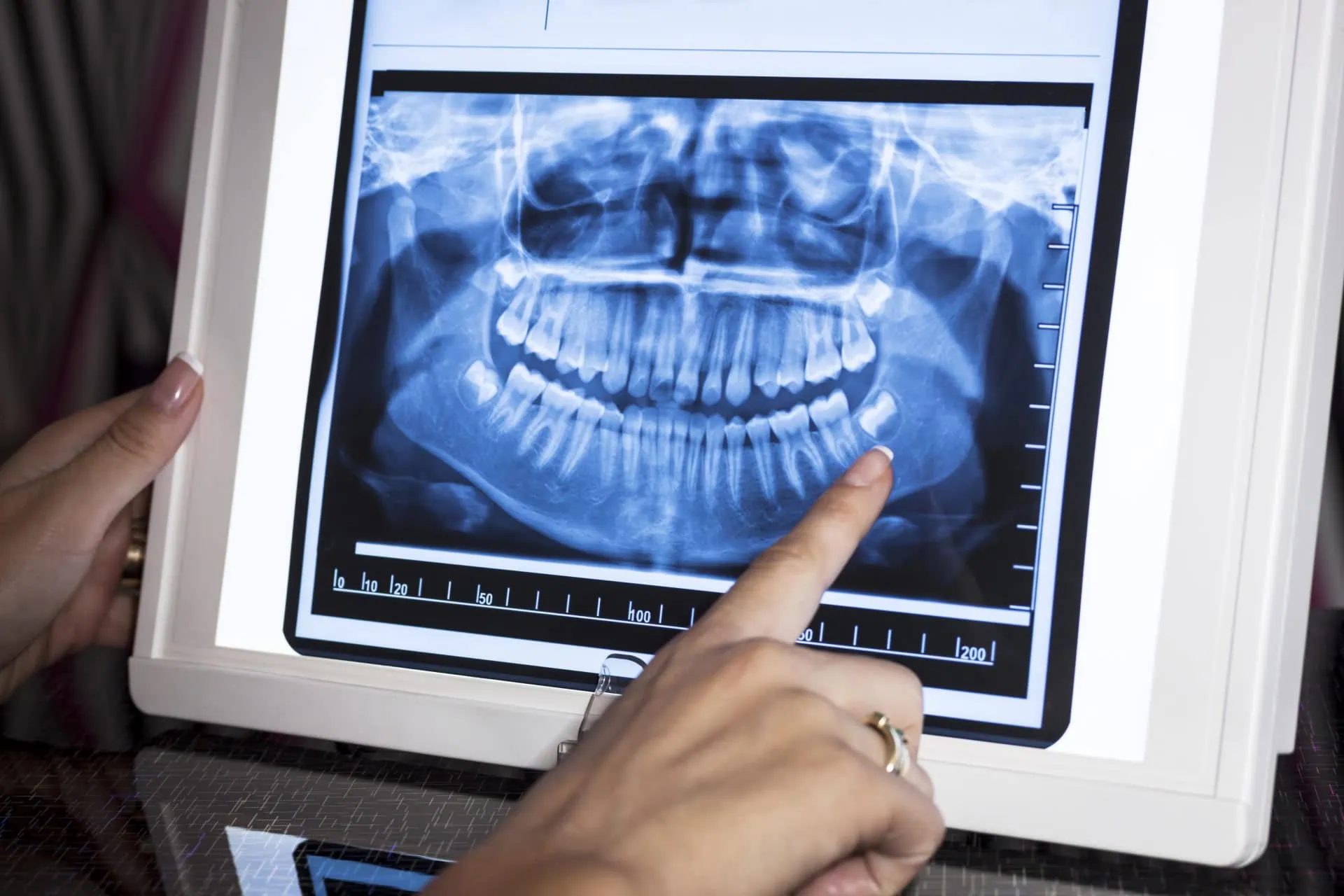Digital X-rays
Dental Technology
Digital X-rays use electronic sensors to capture images of the teeth, gums, and other oral structures. These sensors send the data directly to a computer, where the images are immediately available for the dentist to view, analyze, and diagnose. Unlike traditional X-rays, which use film to capture images, digital X-rays generate images in a digital format.
Digital X-rays at Deer Ridge Dental
Digital X-rays are a modern and highly efficient way for dental professionals to capture detailed images of your teeth, gums, and bones to help diagnose and treat oral health issues. Compared to traditional film-based X-rays, digital X-rays offer numerous advantages for both patients and dental practitioners.
Digital X-rays are an essential tool in modern dentistry, offering numerous advantages over traditional X-rays, including lower radiation exposure, better image quality, immediate results, and enhanced patient comfort. Whether you’re undergoing a routine check-up or a more complex procedure, digital X-rays allow for faster, more accurate diagnoses and treatment planning, ensuring that you receive the best possible care.
If you have any concerns or questions about digital X-rays, don’t hesitate to ask your dentist about the procedure, how it works, and why it’s recommended for your specific situation. They’ll be happy to provide more information to ensure you feel comfortable and informed.
Cosmetic dentistry focuses on improving the appearance of a person’s teeth, gums, and smile. While general dentistry is concerned with the health and function of your teeth, cosmetic dentistry enhances aesthetics, addressing issues such as teeth discoloration, misalignment, chips, cracks, or missing teeth. Cosmetic treatments not only improve your smile but can also boost your confidence and contribute to better oral health.

How Digital X-rays Work
Placement of the Sensor
Exposure to Radiation
Image Generation
Analysis and Diagnosis




Reduced Radiation Exposure
One of the biggest advantages of digital X-rays over traditional X-rays is that they expose patients to up to 80% less radiation. The electronic sensors are far more sensitive to radiation than traditional film, so the amount needed to capture a clear image is significantly lower.
Instant Results
Unlike traditional X-ray film, which requires developing, digital X-rays are available immediately on the screen. This means less waiting time for patients and faster diagnosis. The dentist can discuss the findings with you right away, and any treatment decisions can be made more quickly.
Improved Image Quality
Digital X-rays provide clearer, more detailed images than traditional film-based X-rays. The images can be enlarged, brightened, and adjusted for better clarity, helping the dentist to spot issues like cavities, gum disease, and bone loss more accurately.
Convenience and Speed
Since digital X-rays are stored electronically, they can be easily saved, transferred, and shared with specialists or insurance companies. The digital records also reduce the need for physical storage space for films, making it easier for dental offices to maintain and retrieve past records.
Environmentally Friendly
a. Digital X-rays are a greener option since they do not require the chemicals or physical materials used in traditional film development. There's also no need to dispose of toxic chemicals, making digital X-rays more eco-friendly.
Enhanced Patient Comfort
The digital sensors used in modern X-rays are smaller and thinner, making them more comfortable for patients compared to traditional X-ray film, which can be bulky and uncomfortable to hold in your mouth.
Storage and Accessibility
Digital X-rays are stored electronically, which means they are easily accessible for future visits. If you switch dentists, your X-rays can be transferred quickly and without hassle, reducing the need for you to undergo repeated imaging. In Addition, digital X-ray records can also be integrated into your electronic health record (EHR) system, providing your dentist with comprehensive insights into your dental history
Better Diagnosis
With the ability to manipulate the image (such as zooming in on a specific area or adjusting contrast), digital X-rays allow for more precise diagnoses. This capability can help detect issues in their earliest stages, when treatment is often easier and more effective.
Easy to Share with Specialists
If a referral to a specialist is needed, digital X-rays can be easily emailed or shared through secure online platforms. This makes it much quicker for the specialist to evaluate your case and offer treatment recommendations.
Intraoral X-rays
These are the most common type of digital X-rays and are used to capture images inside your mouth. They are typically taken during routine check-ups to monitor the condition of your teeth and gums.
- Periapical X-rays: Show the entire tooth, from the crown to the root, including the surrounding bone.
- Bitewing X-rays: Show the crowns of your upper and lower teeth in one image and are typically used to check for cavities between teeth.
-
Extraoral X-rays
These X-rays are taken outside the mouth and are typically used to capture images of the jaw and skull.Periapical X-rays: Show the entire tooth, from the crown to the root, including the surrounding bone.
- Panoramic X-rays: Provide a broad view of your entire mouth, including all teeth, the upper and lower jawbones, and the sinuses. These are often used for planning extensive treatments like implants or orthodontics.
- Cephalometric X-rays: A side-view image of the head, often used in orthodontics to assess the relationship between the teeth, jaw, and skull.
-

How Often Should You Have Digital X-rays?
The frequency of X-rays depends on your oral health needs. For a generally healthy patient with no symptoms, X-rays may be taken every 1 to 2 years. However, for patients with certain conditions, such as active gum disease, cavities, or if you’re considering orthodontic treatment, more frequent X-rays may be needed.
Your dentist will discuss the appropriate timeline for X-rays based on your individual oral health.